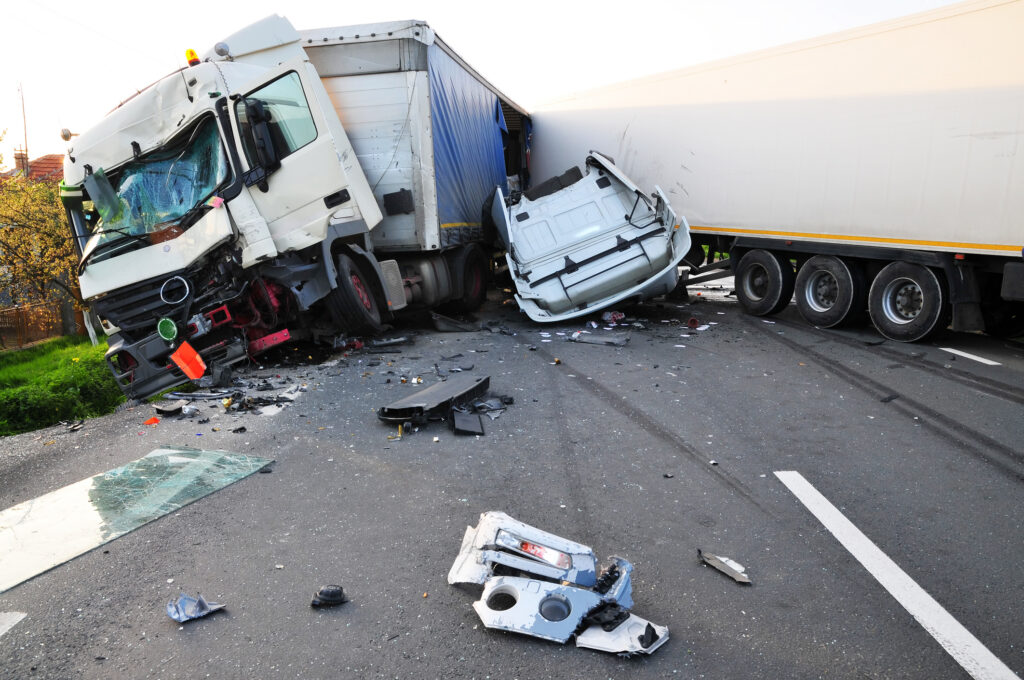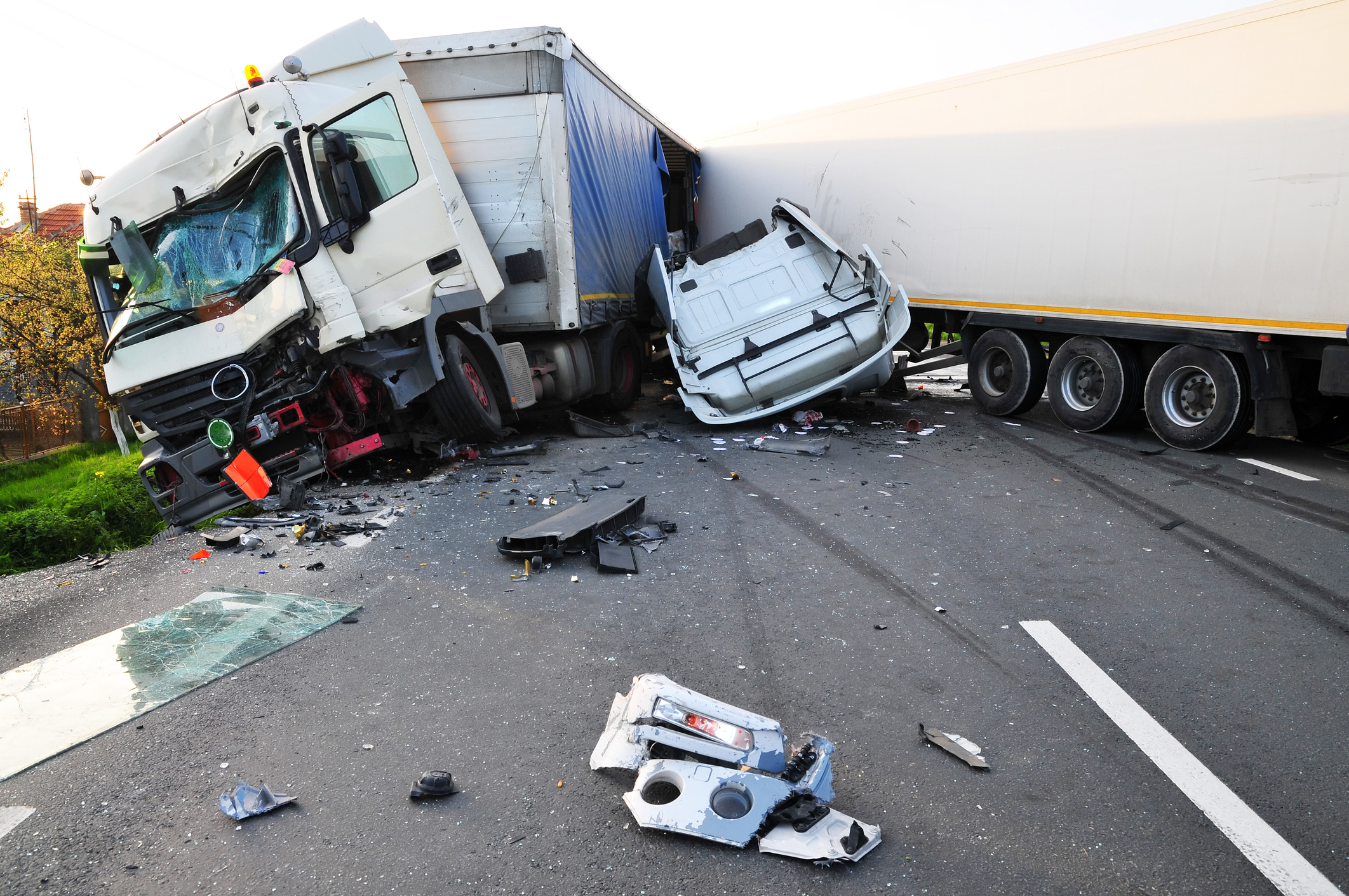Each year, 18-wheeler accidents in the USA garner national attention due to their frequent severity and tragic consequences. These large commercial trucks, sometimes called semi-trucks or tractor-trailers, carry heavy loads and travel long distances, making crashes especially dangerous. Understanding why these accidents occur, how they affect victims, and what steps can reduce their occurrence is essential for drivers, lawmakers, and the public.
In recent years, the U.S. has recorded more than 168,000 crashes annually involving large trucks (which include 18-wheelers). Grossman Law Offices, ConsumerShield, and others report that several thousand are fatal. In 2023 alone, 4,354 people died in crashes involving large trucks, of whom 65% were occupants of passenger vehicles and 16% were truck occupants. IIHS HLDI The number of deaths in large truck accidents has risen nearly 38% since 2009.

In recent years, the U.S. has recorded more than 168,000 crashes annually involving large trucks (which include 18-wheelers). Grossman Law Offices, ConsumerShield, and others report that several thousand are fatal. In 2023 alone, 4,354 people died in crashes involving large trucks, of whom 65% were occupants of passenger vehicles and 16% were truck occupants. IIHS HLDI The number of deaths in large truck accidents has risen nearly 38% since 2009.
Common Causes of 18-Wheeler Accidents
Several factors contribute to the frequency and severity of 18-wheeler accidents:
Driver fatigue and hours of service violations
Truck drivers often drive long distances with tight schedules. Violations of hours-of-service rules increase crash risk. fmcsa.dot.gov+2fmcsa.dot.gov+2
Speeding and aggressive driving
High speed reduces reaction time and increases stopping distance, especially under heavy loads.
Mechanical failures
Brake failures, tire blowouts, faulty steering, or defective brakes all contribute. fmcsa.dot.gov
Poor maintenance
Trucks that are not regularly inspected or maintained are more prone to malfunctions.
Adverse weather or road conditions
Rain, snow, ice, fog, or deteriorated pavement increases accident risk.
Impaired driving
While less common, impairment due to alcohol or drugs (legal or illegal) plays a role in some crashes.
Inadequate training & fatigue
Some drivers may lack training for handling large vehicles under dangerous conditions.
In fact, about 8% of all traffic accidents in the U.S. involve semi-trucks, despite large trucks making up a small share of total vehicles.
Types & Dynamics of 18-Wheeler Crashes
Due to their size and dynamics, crashes involving 18-wheelers often occur in particular patterns:
- Rear-end collisions: When a smaller vehicle follows too closely or a truck fails to stop in time.
- Underride collisions: A passenger vehicle slides under the rear or side of a trailer—one of the deadliest crash types.
- Jackknife events: When the trailer swings out, forming an acute angle with the tractor, often due to abrupt braking or loss of control.
- Rollovers: Trucks may tip or roll during sharp turns or evasive maneuvers, especially when lightly loaded or with shifted cargo.
- Head-on collisions: Less common, but extremely severe, especially when trucks cross medians or pass in illegal zones.
- Multi-vehicle “chain reaction” crashes: Especially on highways, a collision can trigger subsequent crashes.
Consequences & Impact
The results of an 18-wheeler crash can be devastating:
- Severe injuries and fatalities: Due to the mass difference, even a minor collision can result in catastrophic damage to smaller vehicles.
- Emotional trauma: Survivors, witnesses, and families often face psychological trauma.
- Property damage: Total loss of vehicles, cargo, and road infrastructure is common.
- Traffic disruption: Crashes involving big rigs can block highways for hours, causing delays and secondary accidents.
- Legal and financial burdens: Victims often pursue compensation through lawsuits against trucking companies, drivers, or manufacturers.
Legal & Insurance Considerations
In the aftermath of an 18-wheeler accident:
- Liability is complex: Responsibility may rest with the driver, trucking company, maintenance provider, or cargo loader.
- Regulatory rules apply: Federal hours-of-service regulations, inspection documentation, and safety compliance records become key evidence.
- Insurance coverage: Commercial truck policies typically carry higher coverage limits; plaintiffs may seek punitive damages in severe cases.
- Statutes of limitation: Victims must file claims within set time windows, which vary by state.
Hiring attorneys experienced in truck-accident cases is essential, as these cases often require expert analysis of vehicle data recorders (black boxes), driver logs, accident reconstruction, and maintenance records.
Preventive & Safety Measures
Reducing 18-wheeler accidents requires action from multiple stakeholders:
- Stricter enforcement of hours-of-service: Ensuring drivers do not exceed safe driving hours helps prevent fatigue-related crashes.
- Enhanced driver training: Emphasizing defensive driving, awareness of load dynamics, and situational judgement.
- Regular inspections & preventive maintenance: Checking brakes, tires, suspension, lights, and load securement.
- Advanced technologies: Using collision-avoidance systems, automatic emergency braking, lane-departure warnings, and electronic stability control.
- Roadway design improvements: Better shoulders, median barriers, clearer signage, and dedicated truck lanes.
- Public awareness: Educating passenger-vehicle drivers on safe behavior around large trucks—especially avoiding blind spots and giving space.
- Data & monitoring: Using telematics and fleet management to monitor driver behavior, speed, braking events, and compliance.
FMCSA estimates that proper compliance with some hours-of-service rules alone could prevent about 1,400 crashes, saving about 19 lives and 560 injuries annually. fmcsa.dot.gov
Case Example & Human Face
Imagine a two-lane rural highway where a fatigue-addled truck driver drifts. A car ahead slows for an animal crossing. An underride collision occurs when the truck fails to brake in time, trapping the car beneath the trailer. The driver of the car suffers catastrophic injuries. Investigators later uncovered that the truck’s brakes had not been maintained properly, the driver exceeded service hours, and the company had poor oversight.
Real tragedies like this underscore how multiple failures often converge. Each crash is not just a statistic—it’s a life, a family, and a community affected.
Conclusion
An 18-wheeler accident in the USA is one of the most dangerous kinds of road crashes: huge mass, high speeds, and complex systems mean consequences are often tragic. While statistics show fatalities and injuries continue to rise, many accidents are preventable with stricter regulations, better technology, conscientious drivers, and public awareness. For victims, legal recourse can help in the aftermath—but prevention must remain the priority.


Leave a Reply